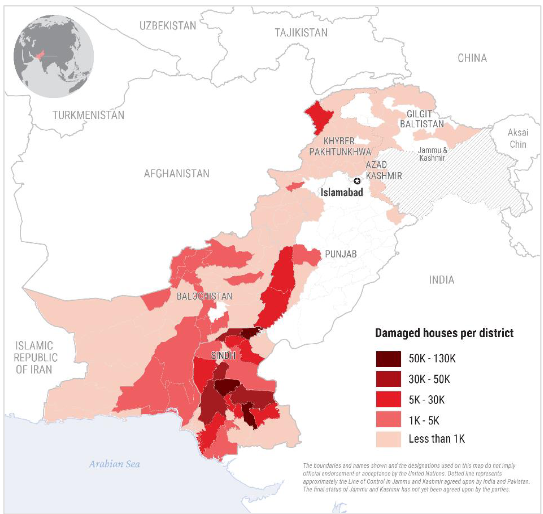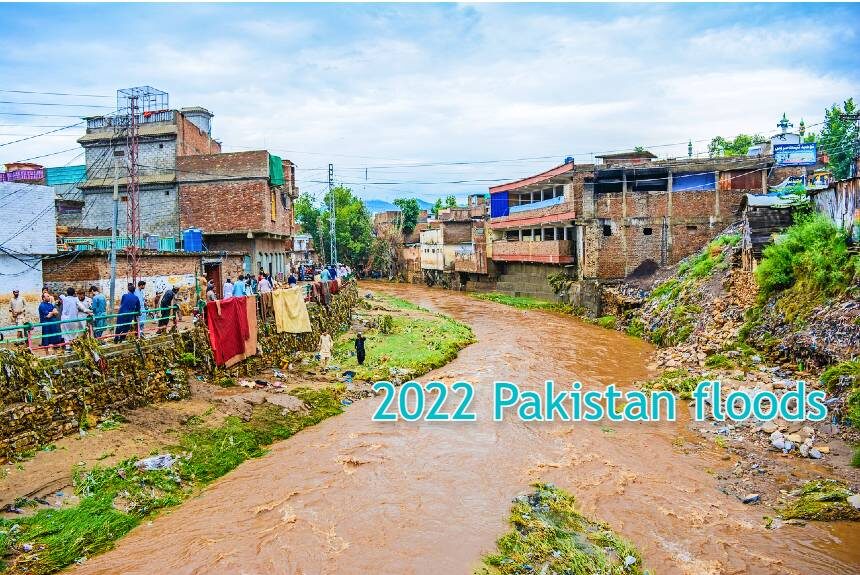Pakistan’s abnormal monsoon season that started in June 2022 caused deadly floods in the country, with death tolls reaching up to 1,033, its worst since 2010 (Baloch, 2022).
The floods also affected 33 million people, representing around 15% of the population (Fihlani & Mao, 2022). This is opposite to China, which is experiencing droughts and heatwaves,
Pakistan senator and climate change minister Sherry Rehman calls this monsoon season’s unrelenting torrential rain a “serious climate catastrophe, one of the hardest in the decade.”
“We are at the moment at the ground zero of the frontline of extreme weather events, in an unrelenting cascade of heatwaves, forest fires, flash floods, multiple glacial lake outbursts, flood events, and now the monster monsoon of the decade is wreaking nonstop havoc throughout the country,” she said in a video posted on Twitter. The on-camera statement was retweeted by the country’s ambassador to the EU (Baloch, 2022).

Pakistan’s annual monsoon is essential in irrigating its crops and replenishing its lakes across the Indian continent. Still, this year’s deluge, made worse by glacial melts, brought devastation and destruction at an overwhelming scale to the country.
Pakistan is identified as one of the most vulnerable countries to climate change. The Global Climate Risk Index 2021 places it in the top 8 as the most vulnerable country to climate change, improving three places from its 5th place in the 2020 Index (Kunbhar, 2021).
According to the UN-Habitat, Pakistan’s climate vulnerability stems from its wide range of hazards, including landslides, floods, droughts, and cyclones.
The paper “Climate Change Vulnerability of Pakistan Towards Natural Disasters: A Review” by Walid Ulah looks at the country’s vulnerability to climate change and says that the country’s encounter with natural disasters like floods, droughts, and cyclones is directly linked to its geographic location, topography, and meteorology.
Walid and Nihei (2022) said that in most cases, poor communities bear the brunt of climate change impacts due to their high exposure and low adaptive capacity. The paper calls for the urgent need to address the country’s natural hazards at scales involving local communities and organisations.
Meanwhile, officials say Pakistan is unfairly bearing the consequences of irresponsible environmental practices elsewhere in the world.
Senator Mustafa Nawaz Khokhar said Pakistan has the highest number of glaciers outside the polar region. This year, alongside a super-monsoon, the country has witnessed unprecedented glacier melting in the north due to global heating.
“It is highly unfair that a country which contributes less than 1% in global emissions is at the receiving end of the climate catastrophe”, Khokhar says (Baloch, 2022).
Sources:
Baloch, S. (2022, August 28). Pakistan declares floods a ‘climate catastrophe’ as death toll tops 1,000. The Guardian. Retrieved from https://www.theguardian.com/world/2022/aug/28/pakistans-south-braces-for-deluge-as-death-toll-from-floods-tops-1000
Fihlani, P, & Mao, F. (27, August 2022). Pakistan floods: Monsoons bring misery to millions in Pakistan. BBC. Retrieved from https://www.bbc.com/news/world-asia-62684037
Kunbhar, Z. (2021, January 26). Pakistan improves on global climate change vulnerability rankings. Geo News. Retrieved from https://www.geo.tv/latest/331839-pakistan-improves-on-global-climate-risk-index-2021.
Wahid Ullah, Nihei Takaaki. Climate Change Vulnerability of Pakistan Towards Natural Disasters: A Review. International Journal of Environmental Protection and Policy. Vol. 4, No. 5, 2016, pp. 126-132. doi: 10.11648/j.ijepp.20160405.13
IMAGE CREDIT: Damaged house report map by AdnanKhadim – Own work, CC BY-SA 4.0, https://commons.wikimedia.org/w/index.php?curid=122389556



Leave a Reply